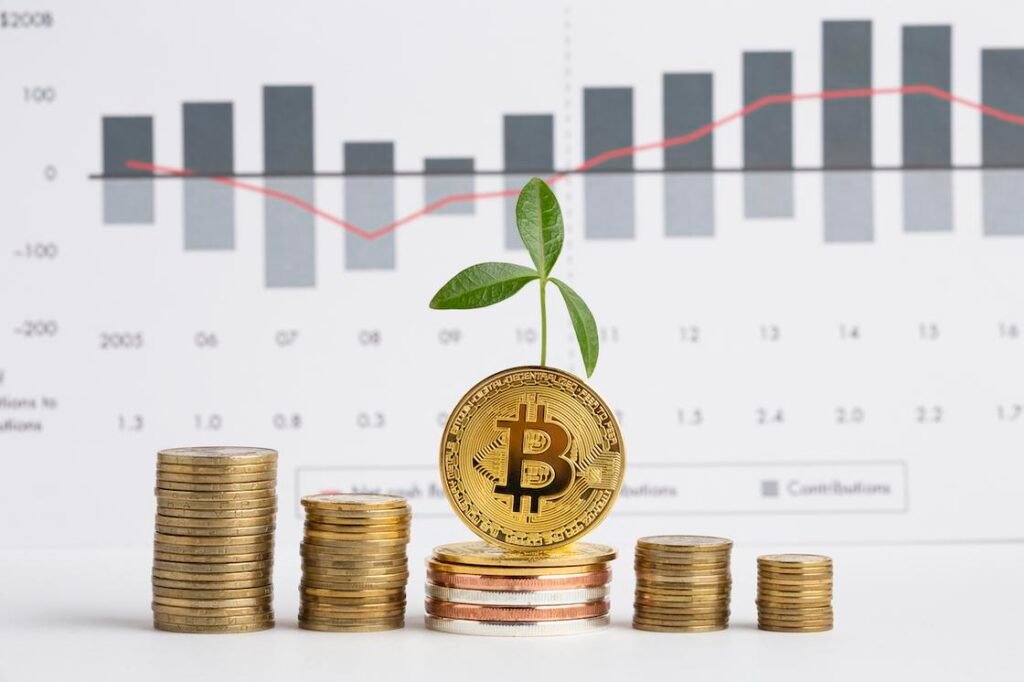Bitcoin has always been a volatile asset, frequently undergoing rapid price fluctuations. However, its recent price surge to $97,000 has captured global attention, sparking renewed interest in the cryptocurrency. This remarkable achievement comes amid continued selling pressure from long-term Bitcoin holders, often referred to as “whales.” Despite these sales, Bitcoin has demonstrated resilience, bouncing back to reclaim a price point not seen in years. So, what exactly is driving this latest price movement, and is the selling pressure from old whales having such a notable effect on the market?
Bitcoin’s Rise to $97K
Bitcoin’s price progression over the past decade has been extraordinary. Bitcoin has developed from a fringe digital asset to a trusted store of value. Bitcoin recently crossed $97,000, bringing it mainstream. This recent spike shows that Bitcoin demand remains strong despite selling demands from large holders.
The $97,000 price point is notable since Bitcoin briefly reached it during past bull runs. Institutional acceptance, retail interest, and a macroeconomic context that favours digital assets over gold and fiat currencies are driving the present increase.
Whales Bitcoin’s Resilience
Early Bitcoin users and investors who have held onto their coins for a long period have sold, driving Bitcoin’s price swings in recent months. When these whales sell their massive Bitcoin holdings, the market can fall. Many early Bitcoin users profited by buying Bitcoin when it was worth a fraction of its current price these holders.
Sometimes cash out for large gains as Bitcoin’s price rises. Exchanges of Bitcoin between early investors and new holders are normal, however they might cause price drops or volatility.Bitcoin has resisted these pressures. Bitcoin’s price has persevered despite whale sell-offs, showing its market resiliency. Bitcoin’s ability to recover and rise demonstrates strong fundamentals fueling demand.
Institutional Support Bitcoin
Institutional investment also helped Bitcoin recover. Large institutions including hedge funds, private equity firms, and publicly traded enterprises have entered the Bitcoin market in recent months. These institutions inject large amounts of capital, creating market demand and liquidity.
Tesla, MicroStrategy, and Square have invested in Bitcoin, indicating a growing acceptance of it as a store of value and inflation hedge. Unlike the retail-driven market, Bitcoin has gained legitimacy and stability from institutional investment.
Bitcoin vs Inflation
Bitcoin’s price has also risen due to macroeconomic conditions. Concerns about inflation have intensified as central banks pursue large monetary stimulus measures like interest rate decreases and quantitative easing. In an atmosphere of growing inflation, Bitcoin, often called “digital gold,” has become an intriguing alternative to equities and bonds.

Due to its scarcity (only 21 million coins were produced) and decentralization, Bitcoin is a good hedge against fiat currency devaluation. Bitcoin Reaches has become a store of value as inflation fears mount and investors seek strategies to secure their capital.
Bitcoin’s Bright Future
Bitcoin’s future is unknown yet promising. Whale selling may continue to affect short-term price movement, but long-term tendencies imply Bitcoin will continue to rise. Bitcoin’s future is bright due to institutional interest, widespread acceptance, and its rising position in the global financial system.
Bitcoin’s latest jump above $97,000 shows that it’s no longer a speculative investment but a core asset for individual and institutional investors. While volatility will certainly continue, Bitcoin’s strong foundations and rising use cases imply it will remain a financial ecosystem player.
Bitcoin’s Resilience Growth
The resilience of Bitcoin is demonstrated by its recovery of the $97,000 price point in the face of selling pressure from long-term whales. Bitcoin Reaches, The strength of its adoption and demand, especially in the face of heavy selling activity, is demonstrated by this spike both new.
Investors and long-time holders may contribute to Bitcoin’s price increase as institutional interest increases and the cryptocurrency’s reputation as a store of wealth is maintained. The future of Bitcoin looks bright as it establishes itself as a top digital asset, but the balance between increasing demand and whale selling pressure will probably determine its course in the upcoming months.
Summary
Bitcoin rose to $97,000, attracting global attention amid prolonged selling pressure from “whales.” Bitcoin’s price recovery shows its resilience and rising demand, driven by institutional investments and macroeconomic factors. Bitcoin’s value stability shows its strength and market stability as whales sell off their large holdings. Bitcoin Reaches has gained legitimacy as a store of value and inflation hedge due to institutional interest from Tesla and MicroStrategy. Bitcoin provides an alternative to traditional investments as inflation fears mount. With rising demand and adoption, Bitcoin’s future seems bright despite short-term volatility.









